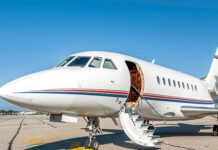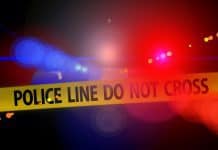
TOMS RIVER – Dozens of young people in navy scrubs stood in the center of a simulated hospital ward, surrounded by life-size patient mannequins neatly tucked into beds. This scene set the stage for the ribbon-cutting ceremony celebrating the relocation of the Ocean County Vocational Technical School (OCVTS) pre-nursing program to Ocean County College (OCC).
The ceremony was attended by state and county officials, as well as school administrators. Approximately 50 high school juniors and seniors enrolled in OCVTS’s pre-nursing curriculum will now take classes at OCC instead of a traditional high school setting. This relocation mirrors the Grunin Performing Arts Academy, which has been based at the college since 2020.
OCC President Pamela Monaco said the long-standing collaboration between the two schools has worked out well. She added that 60 percent of students from last year’s graduating class of the arts academy earned their associates degrees as they were completing high school.
Officials said the decision to move the pre-nursing program to the college came in response to a significant waiting list for vocational education within Ocean County. Currently, there are over 500 students waiting for access to various vocational programs.

Ocean County Commissioner Frank Sadeghi credited Senator Robert Singer with pushing to change the projected move from 2025 to 2024. He stressed the importance of creating future opportunities for local students within the county.
“That’s important to us – establishing a strong career path to compete in an increasing competitive world,” Sadeghi said.
The pre-nursing program offers students rigorous training, college credits, and job shadowing opportunities, providing them with essential skills and experiences in the healthcare field. The curriculum includes hands-on training with state-of-the-art equipment in a newly created training facility.
Christine Santasieri, Principal of Allied Health Programs at OCVTS, emphasized the benefits of the new location. “Students will have access to modern equipment and a rigorous curriculum, which will better prepare them for their future careers,” she said. The program will continue to evolve, with plans to add more advanced courses such as anatomy and physiology.
Santasieri noted that the program is staffed by highly qualified educators, all of whom hold master’s degrees. Training in the program prepares students with the ability to immediately take on roles as Certified Nursing Assistants (CNAs.)

“We’re also in discussions with OCC to go even further,” Santasieri said. “We’d like to find a way to bridge the program so that it’s more conducive to students stepping right into either an LPN or RN program.”
Calvin Ferrell, a junior from Toms River and one of the few male students in the program, expressed his excitement about the opportunities ahead. “My mom’s a nurse, my aunt’s a nurse and a few of my cousins are nurse,” he said. “My mom helps me when I have questions.”
Calvin hopes to earn his RN and eventually a Bachelor of Science in Nursing (BSN).
Many of Calvin’s classmates echoed his enthusiasm for the move, saying that they hope to enter OCC’s nursing program when they finish high school. Graduates from OCC’s School of Nursing must pass the National Council Licensure Exam to become licensed Registered Nurses. The program is designed to thoroughly prepare students for this critical exam. Last year, OCC’s nursing graduates achieved a pass rate of 97.46%.

Both LPNs and RNs are in significant demand, particularly in Ocean County. According to a January 2024 report prepared by New Jersey Collaborating Center for Nursing, Ocean County employed the greatest number of LPNs throughout the state. Most are predominately employed as staff nurses in hospitals or nursing homes.
The U.S. Bureau of Labor Statistics projects that employment for registered nurses will grow by six percent from 2023 to 2033, outpacing the average growth rate for all occupations. Meanwhile, employment for licensed practical and licensed vocational nurses is expected to increase by three percent during the same period, which aligns with the average growth rate across various job sectors.







